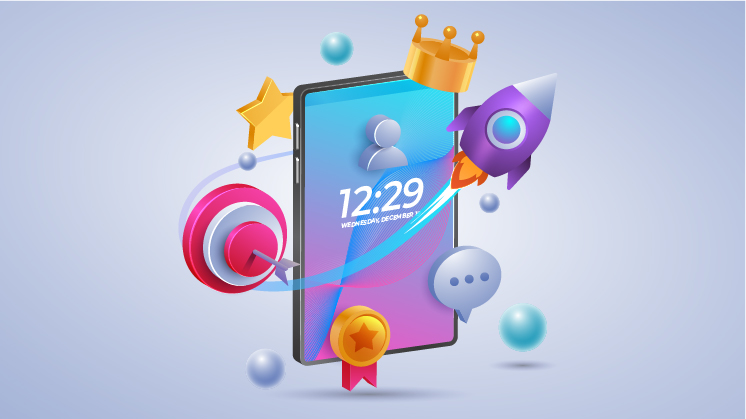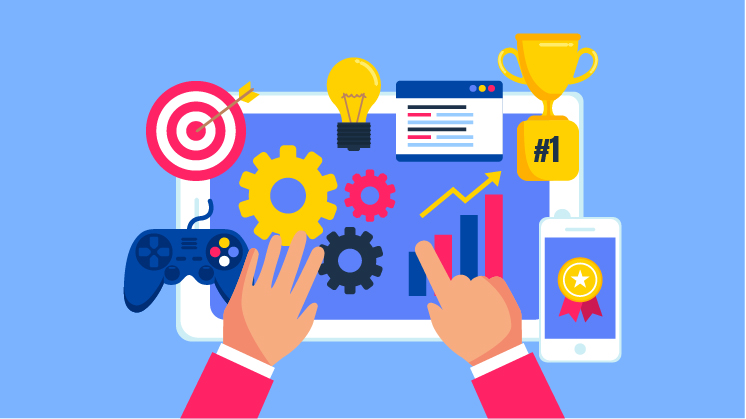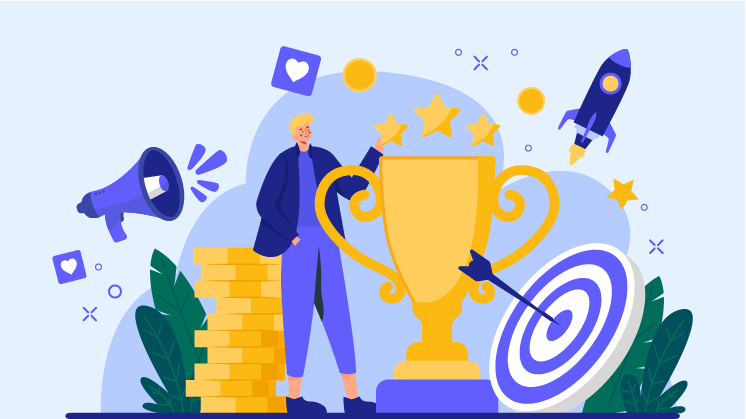When we are young, our parents make mealtimes enjoyable for us so that we eat without complaining. Our teachers set up quizzes and extracurricular events while we were students to assist us in achieving our objectives imaginatively and in a fun way. Implementing gamification techniques can significantly boost sales and improve customer moods by making the shopping experience more engaging and enjoyable. If you’re a business owner in North Carolina looking to establish a solid foundation before employing such innovative strategies, consider the best llc services in north carolina to ensure your business is properly set up for success. When brands want to make more money, they try to change how their salespeople work without making them follow strict rules about their schedule, behavior, or finances.
Companies frequently focus on the behavioral characteristics of their sales force for this aim. They try to comprehend what spurred salespeople to put in more effort and what discouraged them. Brands may then make sure that their teams’ behavioral clockwork is changed to encourage salespeople to improve their performance on their own initiative rather than feeling compelled to increase sales.
In simple terms, businesses make conscious efforts to comprehend behavioral changes. It means what areas need improvement to achieve the desired results.
Gamification – The Concept
A notion known as “gamification” refers to the integration of common tasks with game-like mechanics, including leaderboards, prizes, loyalty points, and bonuses. Gamification helps get rid of boredom by making those boring, everyday tasks more fun for everyone. Gamification is the biggest reality today.
In 2021, the global market accounted for nearly $11.94 billion, which is $7.03 billion more than what was in 2016.
Gamification for sales and marketing alters your surroundings to make them reward-based, more competitive, and generally more engaging, similar to the games you play on your smartphones and in VR environments. Here is a stepwise analysis to help you understand how gamification in sales functions!
Gamification Involving Behavior Encourages Sales
There are three stages of sales gamification that involve human behavior. By leveraging these procedures separately, brands may develop a clear gamification strategy. The actions comprise:
Thorough Planning
The initial component focuses on condensing gamification’s broad use into more manageable target areas with SMART objectives. They meet the criteria of being Specific, Measurable, Achievable, Realistic, and Time-Sensitive. Here, we consider sales growth as a major benefit of gamification because it relates to raising the customer’s appetite to buy. Sales gamification regarding customer behavior, however, involves more than that. Some components include:
Finding Problems
What, in your opinion, is the issue with sales in your field as a product or brand owner? Revenue generation is a complex field; thus, the response may vary in depth. For some, it’s below-par design, and for others, it may be time management; email response rate can also be an issue for some owners.
The procedure of pinpointing the problem may occur at several levels, including promotion, creativity, finances, resource analysis, management, and so on. Problem identification also links problems to their root causes and to other problems that have to do with your way of making money or your framework.
Finding Solutions
After identifying your root cause or problem, you need to hunt for solutions thereof. Gamification in its real sense is the foremost answer.
Gamified learning is expected to be valued at $25.7 billion by 2025
With a poor and less-experienced creative team, you need to hire better individuals, consider brand redesigning, or train the existing team to maximize your resources. You may need to think outside the box when putting together different problems and solutions because the answers to sales problems can sometimes cover a wide range of sales.
Strategic Planning
The third planning stage entails developing gamification tactics to solve issues and implementing remedies that unclog your revenue pipelines. The core of gamification is to link your problems with gamified solutions. It is the aspect that sets it apart from other issue-resolving techniques.
Assume that one of your less-popular products is the source of your problem. You are aware of your product’s potential and the excellent marketing you have done. However, your brand’s appeal may have been diminished since it was introduced while the market was overheated or when a discount promotion was running for a competing product. Overall, your audience was unimpressed with the product.
Rewards like gift coupons, raffle prizes, and spin wheels against purchases have become quite common among brand owners. All these incentives can impact consumer behavior and encourage your target consumer to make more purchases to be eligible for the award. Your sales will automatically start to grow!
The Execution
Once you know how to do it, it’s time to start carefully planning how sales gamification about how people act can be used to boost sales through client motivation, resource allocation, etc.
While gamification seems like a free-form method of boosting sales, it takes plenty of planning hours and trial-and-error efforts before you can be sure of your results. The reason is that gamification is unpredictable and has a wide range of uses, which often leads to surprising results for a wide range of clients.
70% of 2000 global companies employ gamification in some way
You may further split your implementation into the following components:
Planning for Resources
You’ll need resources everywhere you intend to apply sales gamification. It may include resources like time, knowledge, equipment, and technology, as well as space, communication systems, funding, etc. You have to make different resource maps to figure out how different parts of sales gamification might work together.
Structuring
After gathering the resources, you need to kick off the onboarding team’s hiring process for structuring and project design. This will incorporate the improvements you want to see and the sales gamification settings you’ll use to make them happen.
For example, suppose your goal is to increase grocery sales with salespeople having varying goals to achieve. In that case, you’ll need monitoring tools, CRMs, and key people to move people from a disengaged, unmotivated state to a motivated, game-like state.
Testing
Irrespective of your faith in a sales gamification strategy, it is still an arduous task to execute it. So, before putting your gamification plan into action, you need to test it in certain places to make sure there are no mistakes.
Even if you are confident in your gamified sales plan, it will still be a huge risk to take. So, you may test your gamification in specific sales locations to look for flaws and make adjustments before you launch it fully. For example, if you have a promotion for women, you might put it in places where women are the majority.
However, suppose you realize your store selection is not up to the mark. In that case, you always have a chance to make some amendments to the plan and add other locations apart from conventional ones in your sales gamification strategy. If you’re happy with your design after the test, you can move forward with your plan and start the campaign.
Organizations that employ gamification can observe up to7X higher conversion rate
The Outcome
Once you begin executing your sprint for sales gamification for behavior, give it some time to get results. Initial stats like sales and products sold are obvious indicators. However, it will be helpful for you to mark those indicators that are oblivious but insightful to show what sales gamification has achieved so far.
For example, client feedback is a useful sign that helps paint a clearer picture of how the sales gamification strategy works.
Customer feedback, for example, can be used to make your sales gamification more engaging and enlightening. If you’re launching a new pizza flavor, you may invite your audience to share photos of their slices with the new flavor’s hashtags and a few lines about what they enjoy about it. Rewards like cash back on prospective purchases, free coupons for the week, and other benefits could be kept.
Final Words
Sales gamification increases the excitement. Gamification for consumer behavior might help you make a distinctive brand since it’s bold and uncertain. It also helps you build a stable brand identity without having to spend a lot of money on expensive marketing campaigns or brand relaunches.


